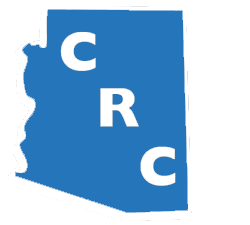Typical Steps in Cleaning of Commercial Kitchen Exhaust Hood Systems Tucson, Arizona
Cleaning a restaurant exhaust system typically involves the removal of grease in the entire system. Hand scraping and power washing the exhaust fan, all connecting ductwork, filters, plenum, and hood. At Cleaning Resource center we use hot water just over 200 degrees with a chemical cleaning agent. Each section of the system should be scraped then power washed using a various methods that reduces the need for extensive lean up after finishing. The required Prep Work to any cleaning, ensures the area is safe and controlled for service
Wrapping the Hood
Hood filters and the grease drip trays are removed as a first step. They are placed outside the work area, to clean later. Heavy plastic sheeting is attached to the edge of the hood, providing a tented funnel in hood area all the way around. The plastic sheeting protects the cooking equipment from runoff and confines the area affected by the runoff. Care must be taken to be sure the plastic won’t allow water to run onto the cooking equipment. Spring clips and various specifically designed tools are usually used to attach the plastic to the hood. The plastic should start and end where it is possible to lift the plastic edge to step inside the plastic funnel. The edges should overlap two or three feet to provide a good seal. If there are any hot cooking surfaces the plastic must be kept away from them. Small plywood sheeting sometimes comes in handy to cover certain equipment like the range top and fryer, etc.
Waste Containment
Once the plastic funnel is installed the bottom edge of the plastic can sometimes be directed into a plastic garbage can for water collection. Otherwise a vacuum person should be stationed outside of the tent to vacuum up water as it runs out from under the plastic. A large capacity wet dry vacuum should be used for this purpose. Wastewater generated during the cleaning project is typically disposed of in the floor grease trap.
The Exhaust Fan
Prior to preceding the exhaust fan will be “locked out” to make sure electrical power is shut off to the exhaust fan and won’t be restored until the job is done. Most exhaust fans are roof mounted. The fan is secured to a curb, onto the ductwork. The first step is to remove the fan from the curb by tipping it off the duct; all dome style fans are required to have a hinge kit. Exhaust fans should have enough electric cable to allow you to do this. Next a cleaning chemical is applied to the fan and to the inside of the ductwork. After the chemical has been applied and allowed to dwell as recommended on the product label, we then pressure wash the fan and then the ductwork. Then the pressure washing technician will move to the hood to power wash. After washing is complete, the fan is tipped back onto the ductwork and secured. At CRC our Technicians will rinse off the roof area where we have been working removing greasy water from the entire roof. Sometimes exhaust fans are mounted on an outside wall with the hood directly on the other side. An installation like this can usually be cleaned without removing the exhaust fan. If there is ductwork to clean on a wall mounted system, access must be gained either from the hood end, through access panels, or by removing the fan from the wall. In these instances access to the bottom of the fan from the ductwork is essential. Sometimes wall mounted fan will also have hinge kits.
Application of the Cleaning Chemical
We apply cleaning chemical to surfaces using a direct spraying system, either compressed air or electric. We have a variety of chemicals depending on the job and condition of the system. All the products we use are very strong however out Technicians are well trained in chemical application.
The Filters & Grease Drip Tray
The filters are usually cleaned either off site or outside. We can only clean filters in a designated area where the greasy water will be controlled and easily disposed of. Most facilities soak the filters with chemical weekly and then either power wash, or rinse off with hot water and a hose. CRC does have a hood filter exchange program. The grease drip trays are also emptied and cleaned
The Exhaust Hood
Chemical is applied to the inner hood are called the plenum and allowed to dwell. It is then pressure washed off. The channel formed where the lip holds the filters in place should be wiped out with a towel. After washing the inside of the hood, we carefully wipe water drips from pipes and light fixtures. We use a stainless steel cleaner as the last step making the hood look great. This is the section that the restaurant owner sees first and because of that it is what causes the most complaints.
Detail and Hood Check
After the entire cleanup is completed, we turn on the fan. Our Service Report will outline the specific details of your system along with any deficiencies. The last step is to apply a hood sticker to the hood recording when it was cleaned, as well as the next cleaning due. The hood sticker will have our company name and phone number
For the best hood exhaust cleaning in Tucson Arizona call CRC


